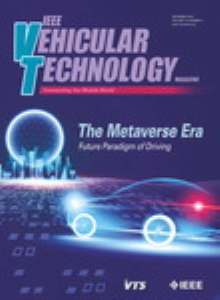SeqPolar:用于智能车辆定位的偏振LiDAR地图与HMM的序列匹配
IF 6.1
2区 计算机科学
Q1 ENGINEERING, ELECTRICAL & ELECTRONIC
引用次数: 6
摘要
3D激光雷达地图在智能车辆定位中发挥着越来越重要的作用。在本文中,所提出的SeqPolar定位方法由两部分组成。第一部分是一种新的基于节点的激光雷达地图表示方法,称为偏振激光雷达地图(PLM),第二部分是基于二阶隐马尔可夫模型(HMM2)的地图匹配算法,用于车辆定位。现有的3D激光雷达地图通常是通过累积在不同时间收集的3D激光DAR云来构建的,与此不同,所提出的偏振激光雷达地图是由一组节点生成的。每个节点由三个元素组成:偏振激光雷达图像、从偏振激光雷达中提取的场景特征和传感器姿态。偏振激光雷达图像使用多通道图像格式对3D激光雷达云的3D坐标和反射率进行编码,这是3D激光雷达云中更简洁、直接和结构化的表示。在定位步骤中,我们提出了一种基于HMM2的方法来匹配地图节点内的输入偏振图像序列,并从PLM中找到最近的节点。之后,通过3D配准从匹配的地图节点容易地定位车辆。所提出的SeqPolar定位方法已通过实际现场数据集和公共KITTI数据库进行了验证。实验结果表明,所提出的基于HMM2的匹配方法可以从PLM中找到最近的节点,准确率高达98%。此外,基于预先构建的PLM的SeqPolar定位方法在两个测试数据集上平均可以达到30厘米的定位精度。本文章由计算机程序翻译,如有差异,请以英文原文为准。
SeqPolar: Sequence Matching of Polarized LiDAR Map With HMM for Intelligent Vehicle Localization
3D LiDAR maps are playing a more and more important role in intelligent vehicle localization. In this paper, the proposed SeqPolar localization method consists of two parts. The first part is a novel node-based LiDAR map representation method, termed polarized LiDAR map (PLM), and the second is a map matching algorithm based on a second-order hidden Markov model (HMM2) for vehicle localization. Unlike existing 3D LiDAR map, which is usually constructed by accumulating 3D LiDAR clouds collected at different times, the proposed polarized LiDAR map is generated from a set of nodes. Each node consists of three elements: a polarized LiDAR image, scene features extracted from the polarized LiDAR image, and sensor pose. The polarized LiDAR image encodes 3D coordinates and reflectivities of the 3D LiDAR cloud using a multi-channel image format, a more concise, straightforward, and structured representation of the 3D LiDAR cloud. In the localization step, we propose an HMM2-based method to match a sequence of input polarized images within the map nodes and find the nearest node from the PLM. Afterward, the vehicle is readily localized from the matched map node with 3D registration. The proposed SeqPolar localization method has been validated with the actual field dataset and the public KITTI database. Experimental results demonstrate that the proposed HMM2-based matching method can achieve up to 98% accuracy to find the nearest node from PLM. Moreover, the SeqPolar localization method based on the pre-built PLM can achieve 30-centimeter localization accuracy in average on both test datasets.
求助全文
通过发布文献求助,成功后即可免费获取论文全文。
去求助
来源期刊
CiteScore
6.00
自引率
8.80%
发文量
1245
审稿时长
6.3 months
期刊介绍:
The scope of the Transactions is threefold (which was approved by the IEEE Periodicals Committee in 1967) and is published on the journal website as follows: Communications: The use of mobile radio on land, sea, and air, including cellular radio, two-way radio, and one-way radio, with applications to dispatch and control vehicles, mobile radiotelephone, radio paging, and status monitoring and reporting. Related areas include spectrum usage, component radio equipment such as cavities and antennas, compute control for radio systems, digital modulation and transmission techniques, mobile radio circuit design, radio propagation for vehicular communications, effects of ignition noise and radio frequency interference, and consideration of the vehicle as part of the radio operating environment. Transportation Systems: The use of electronic technology for the control of ground transportation systems including, but not limited to, traffic aid systems; traffic control systems; automatic vehicle identification, location, and monitoring systems; automated transport systems, with single and multiple vehicle control; and moving walkways or people-movers. Vehicular Electronics: The use of electronic or electrical components and systems for control, propulsion, or auxiliary functions, including but not limited to, electronic controls for engineer, drive train, convenience, safety, and other vehicle systems; sensors, actuators, and microprocessors for onboard use; electronic fuel control systems; vehicle electrical components and systems collision avoidance systems; electromagnetic compatibility in the vehicle environment; and electric vehicles and controls.

 求助内容:
求助内容: 应助结果提醒方式:
应助结果提醒方式:


